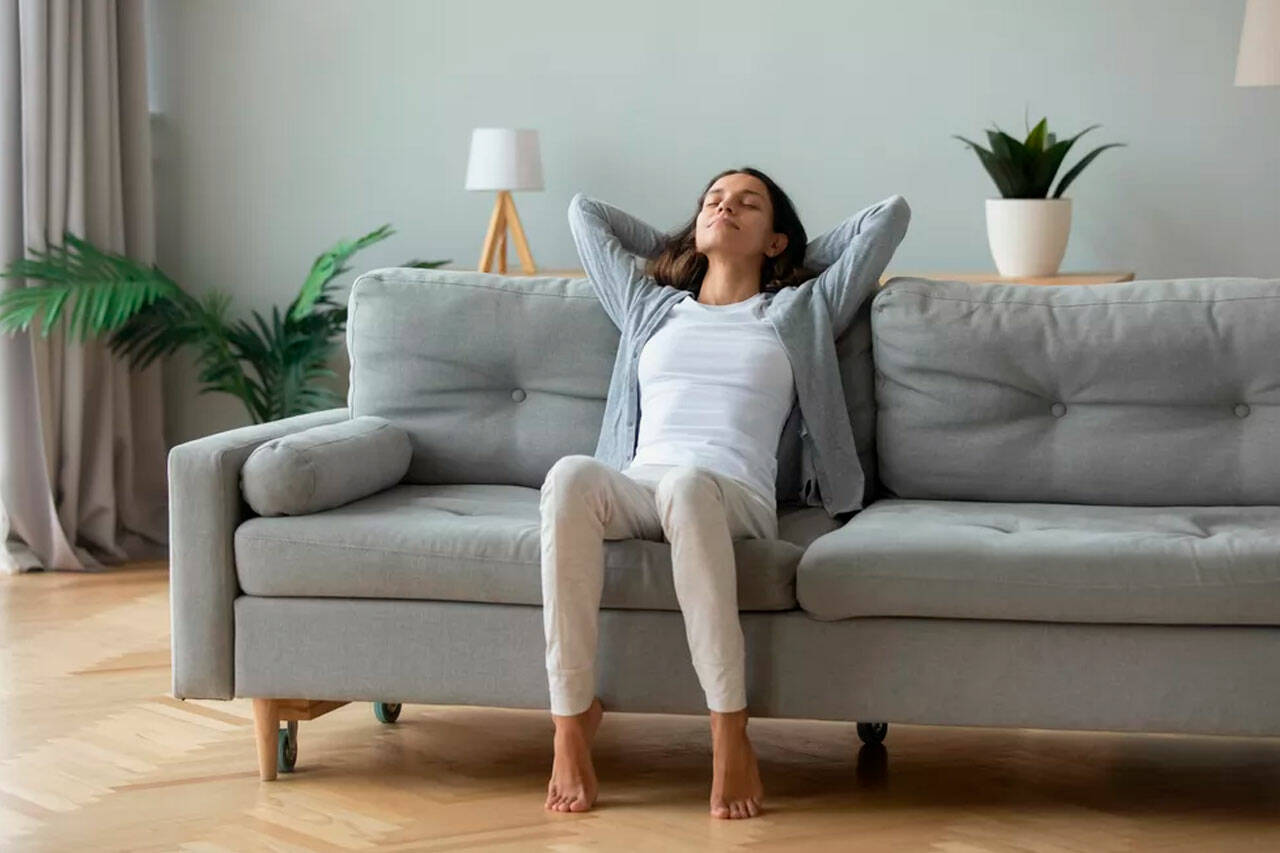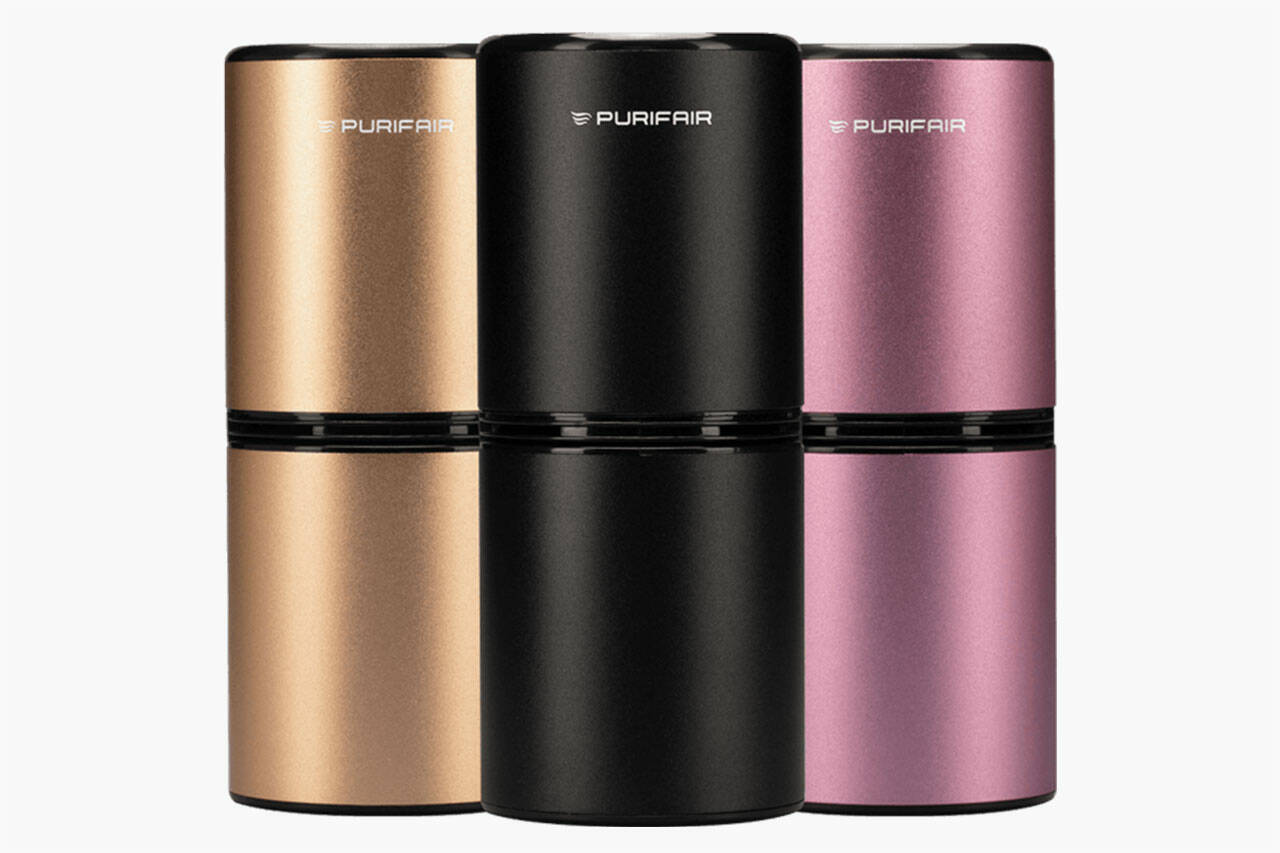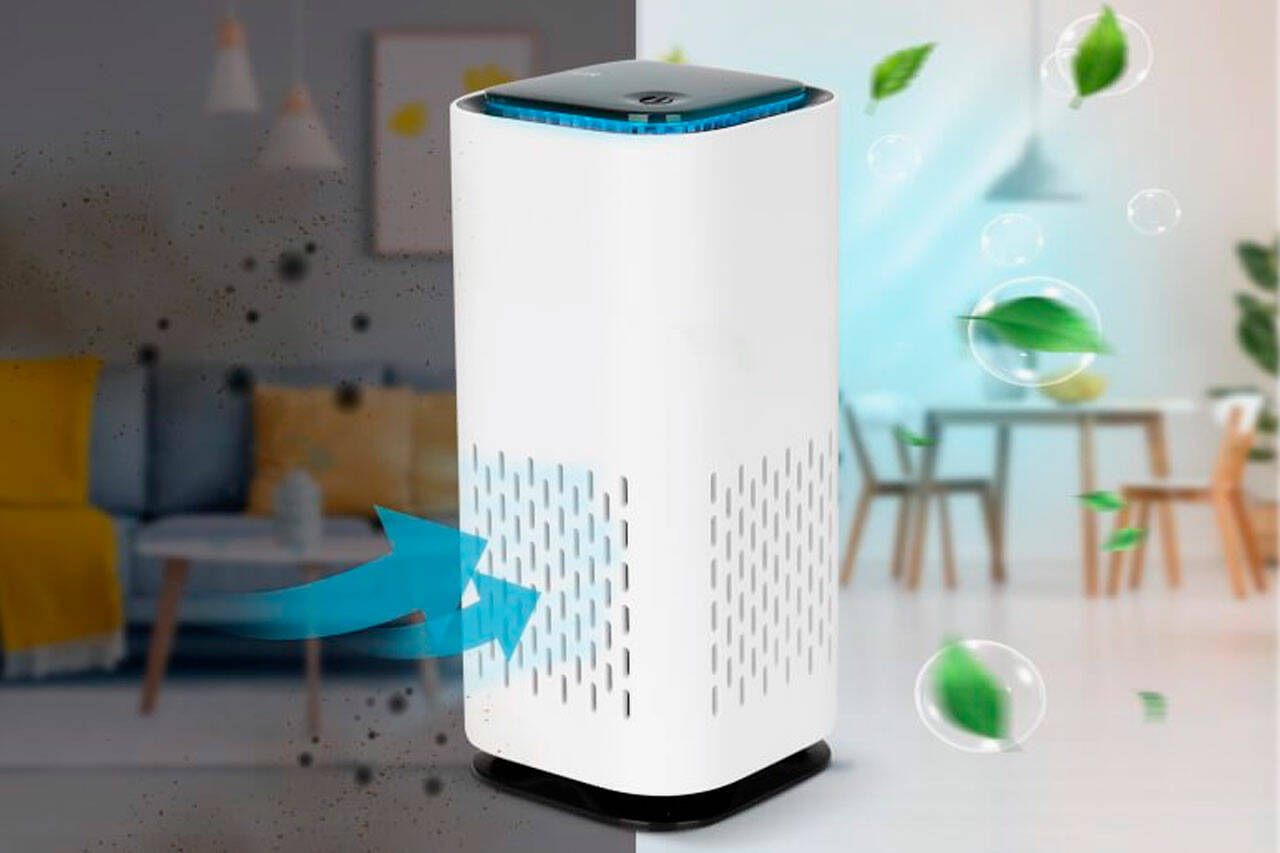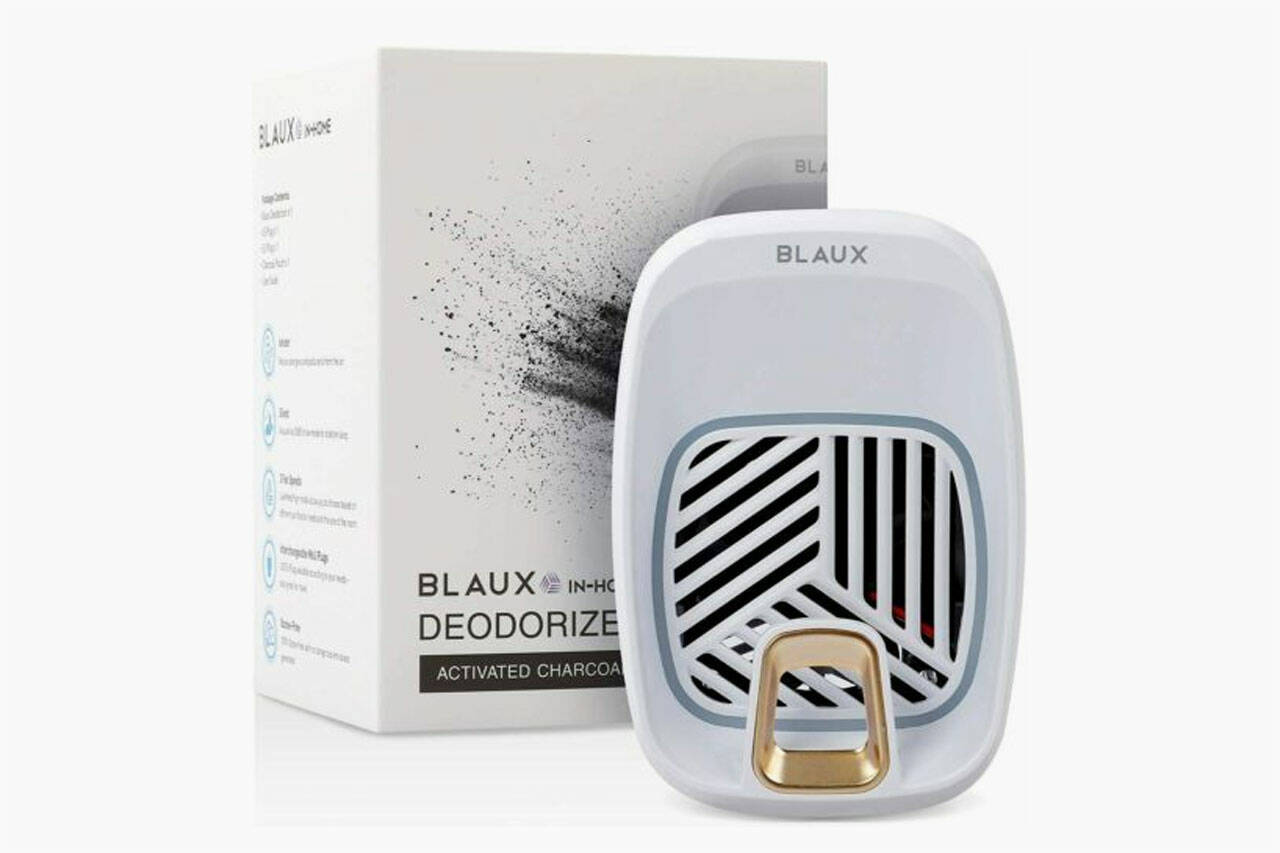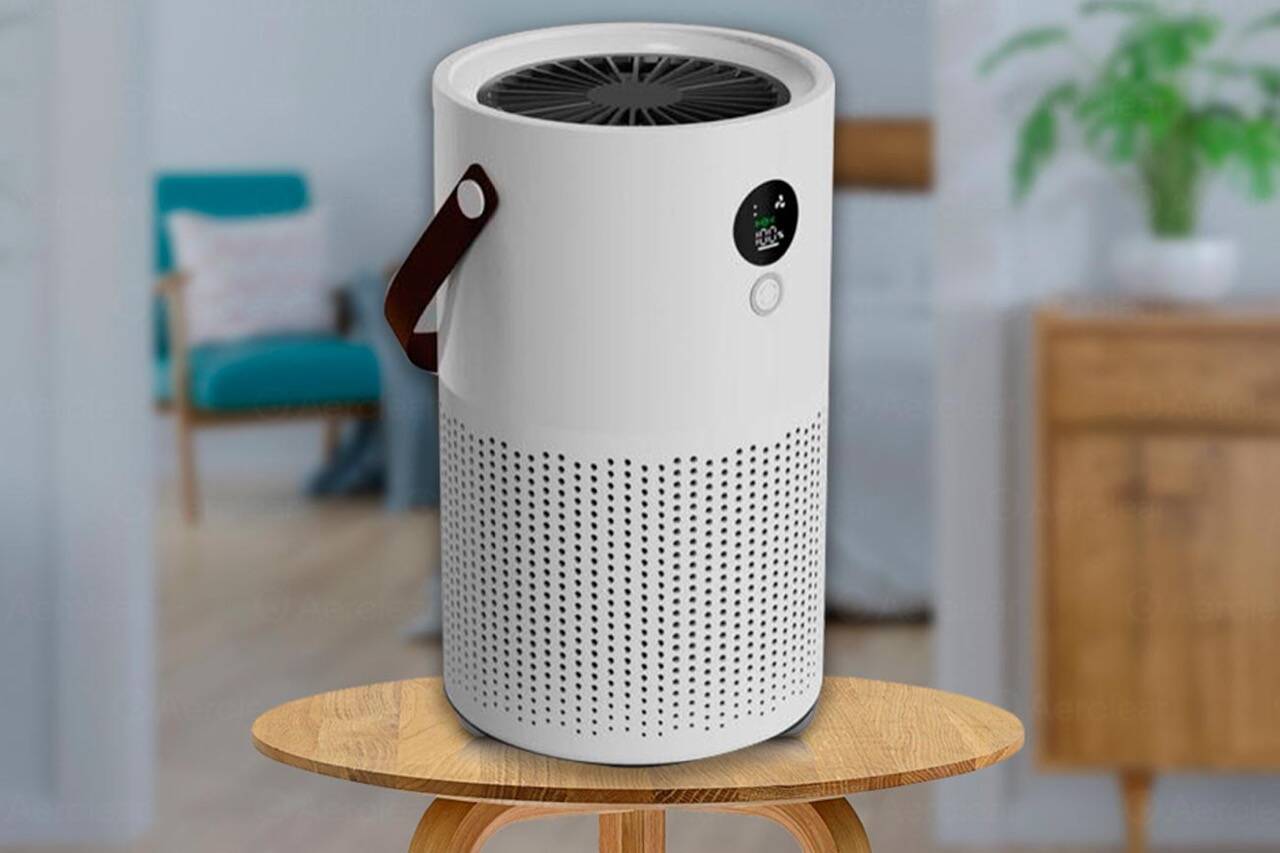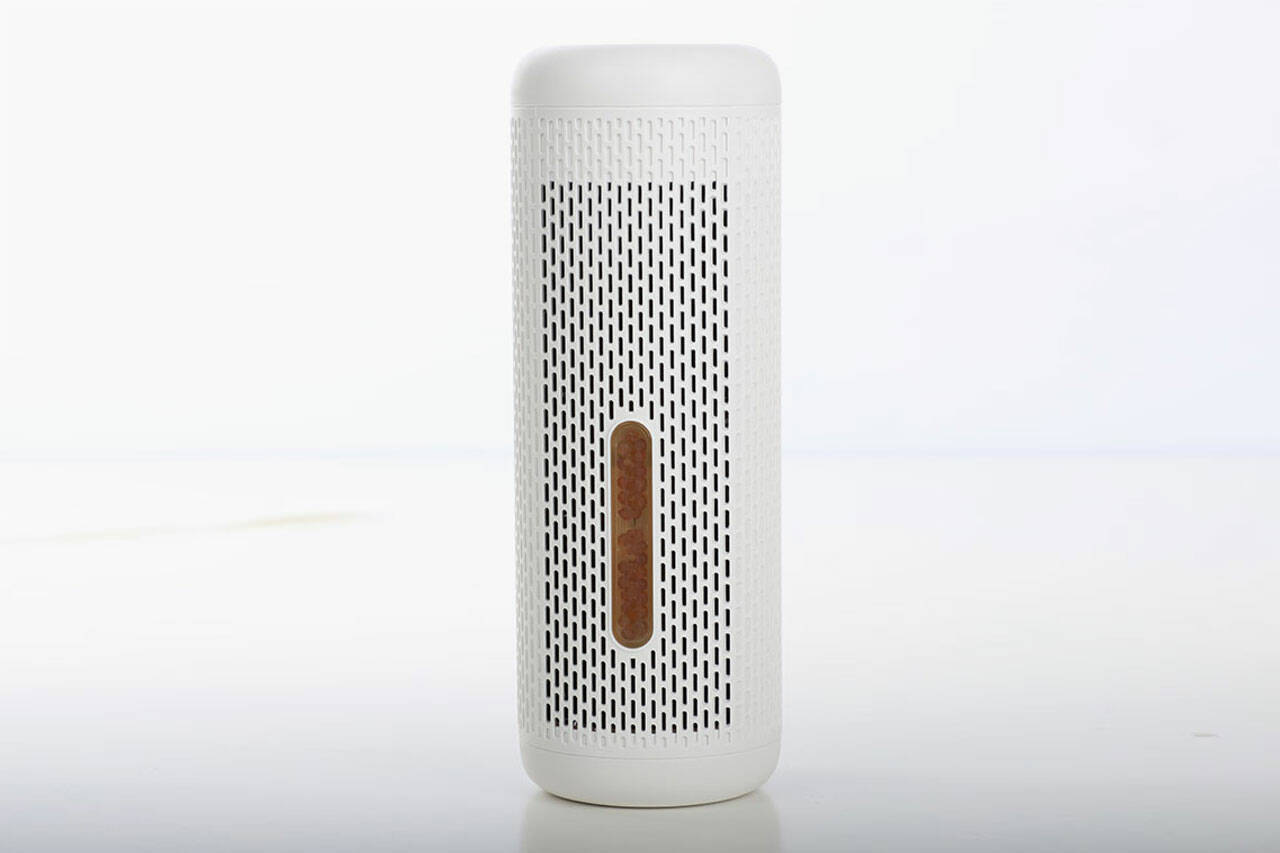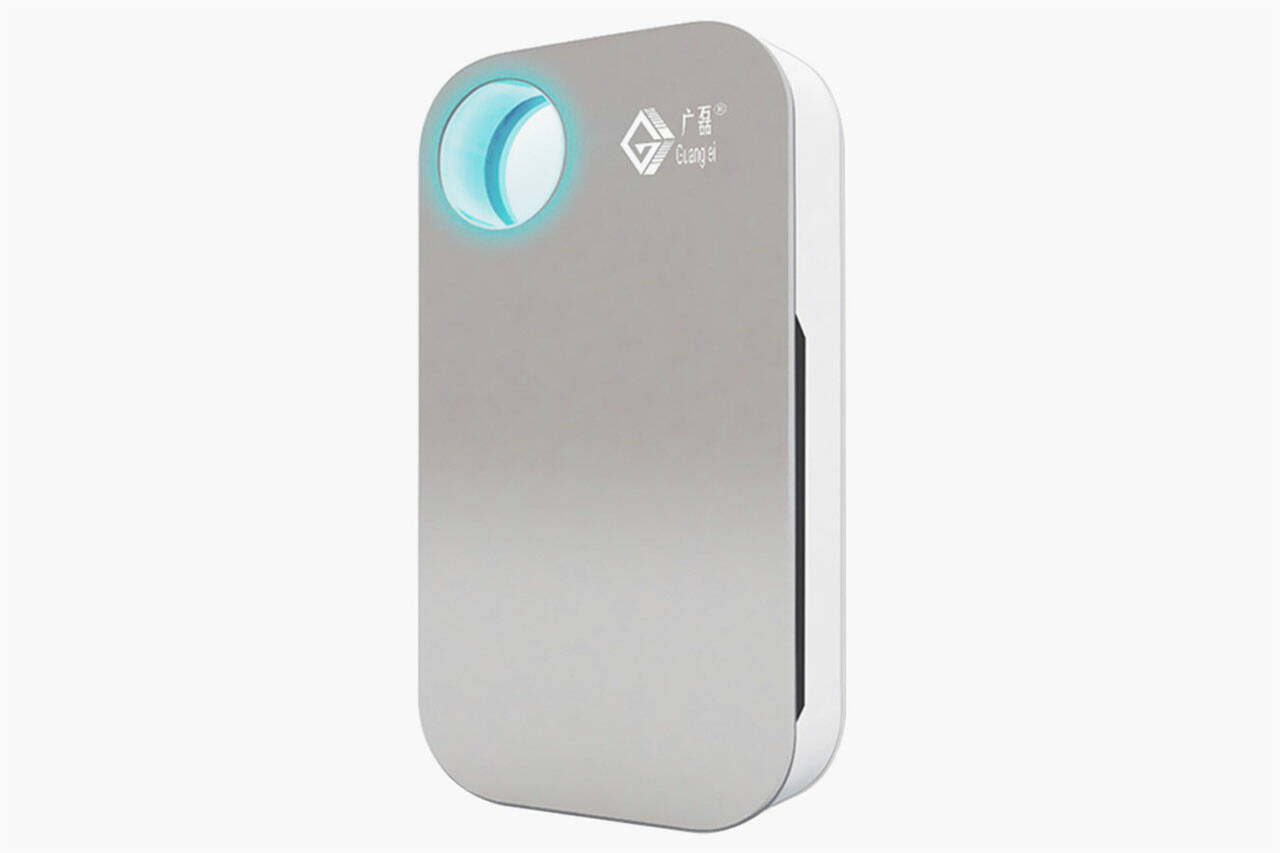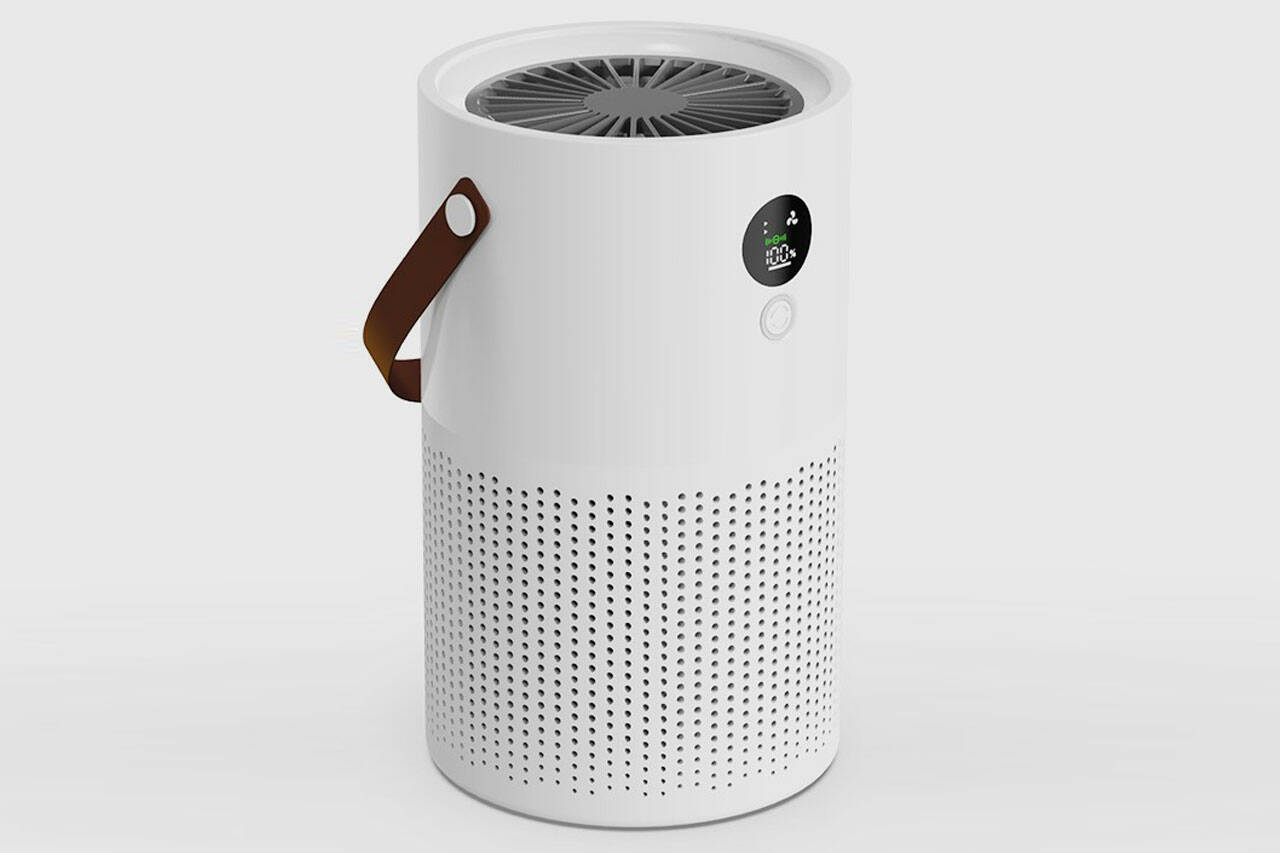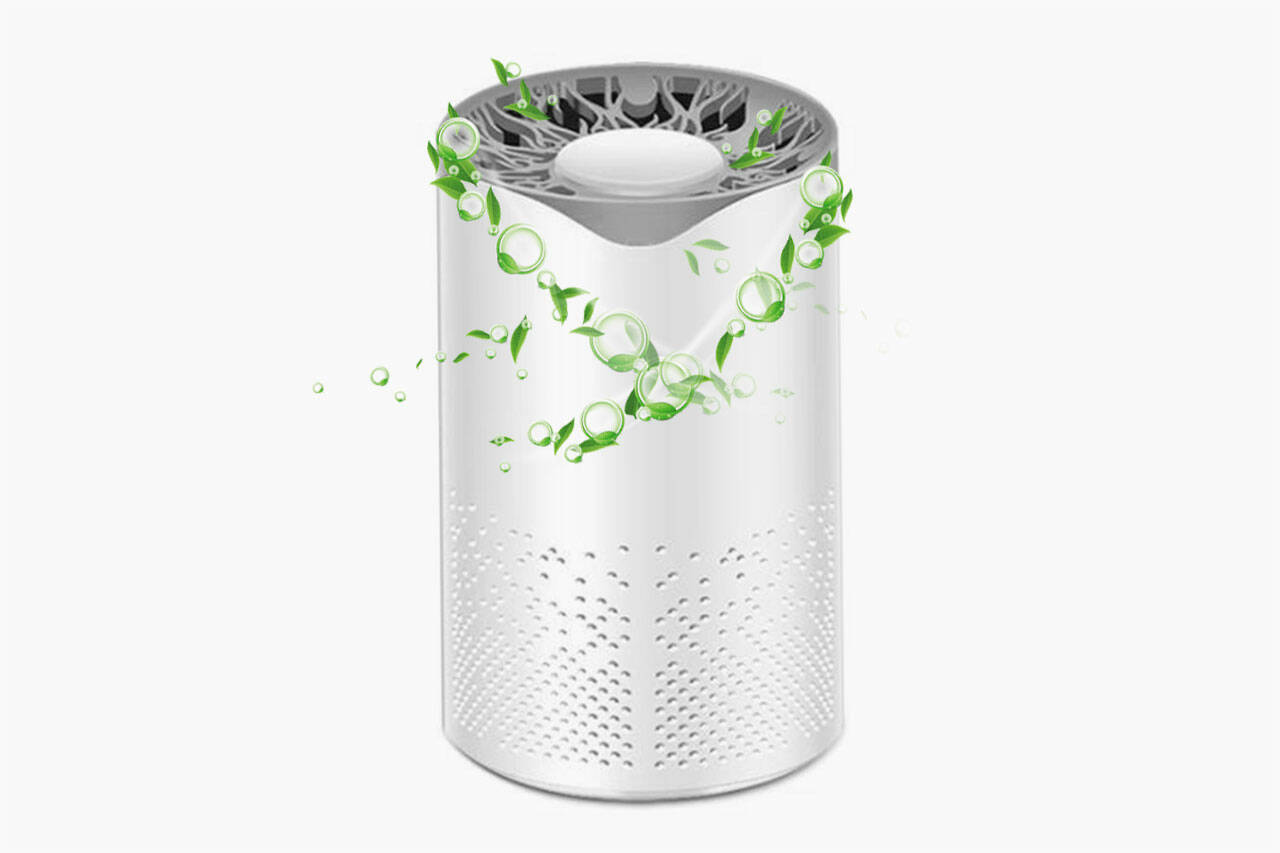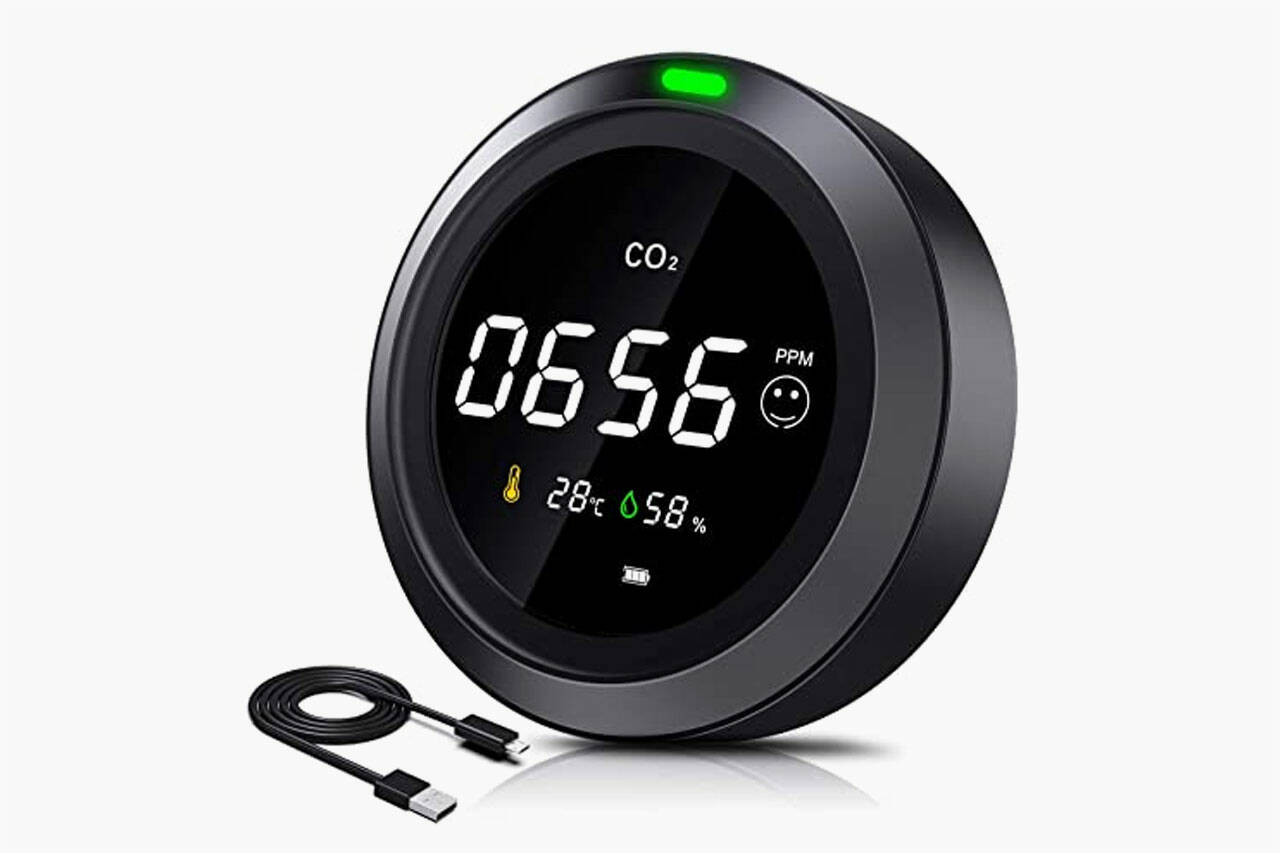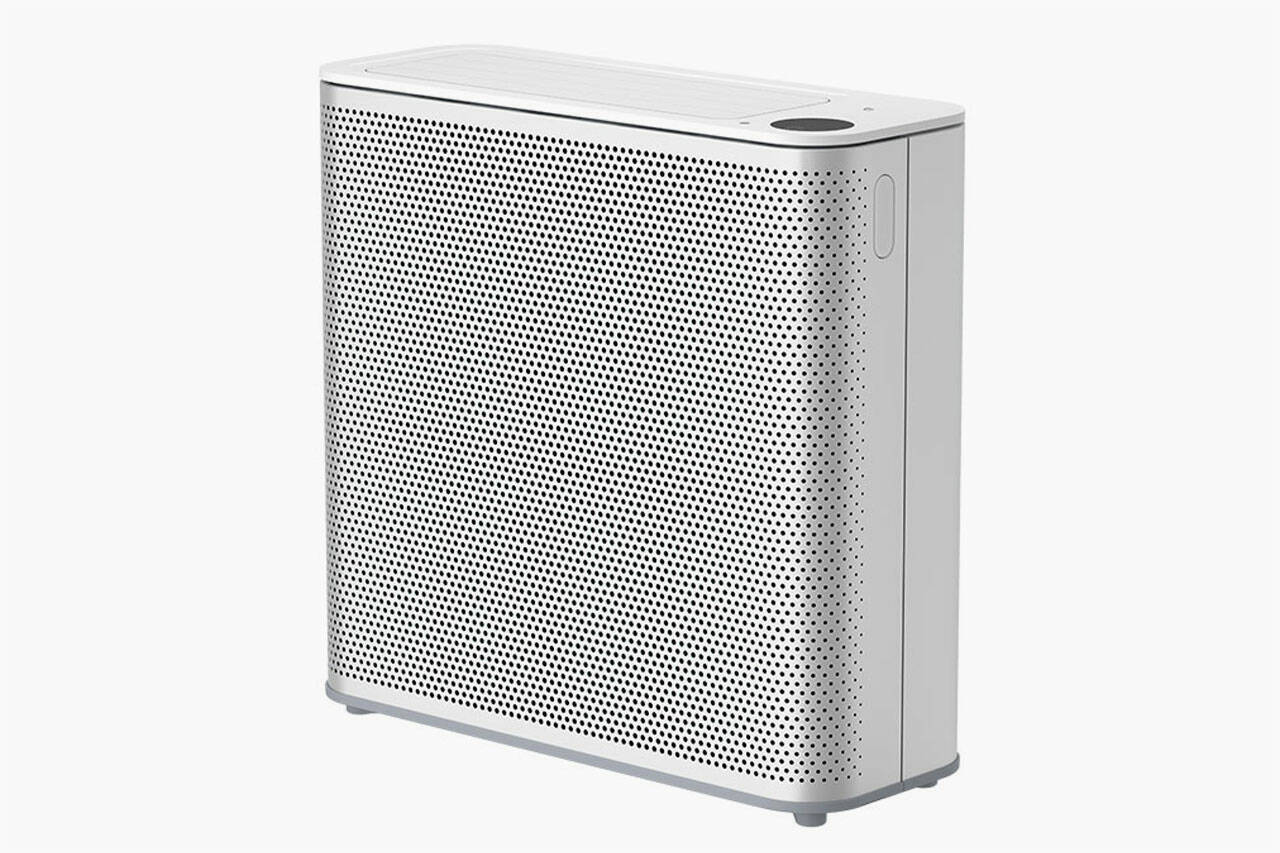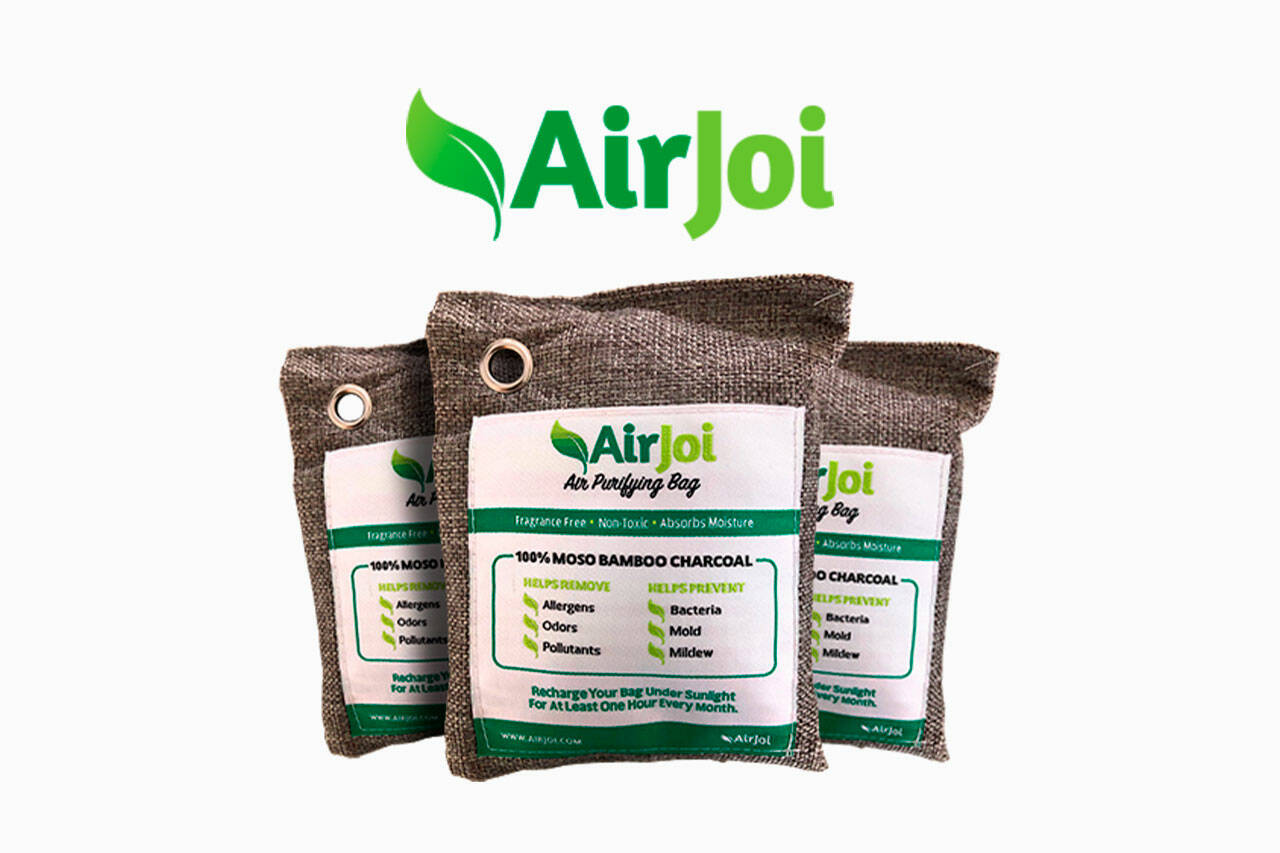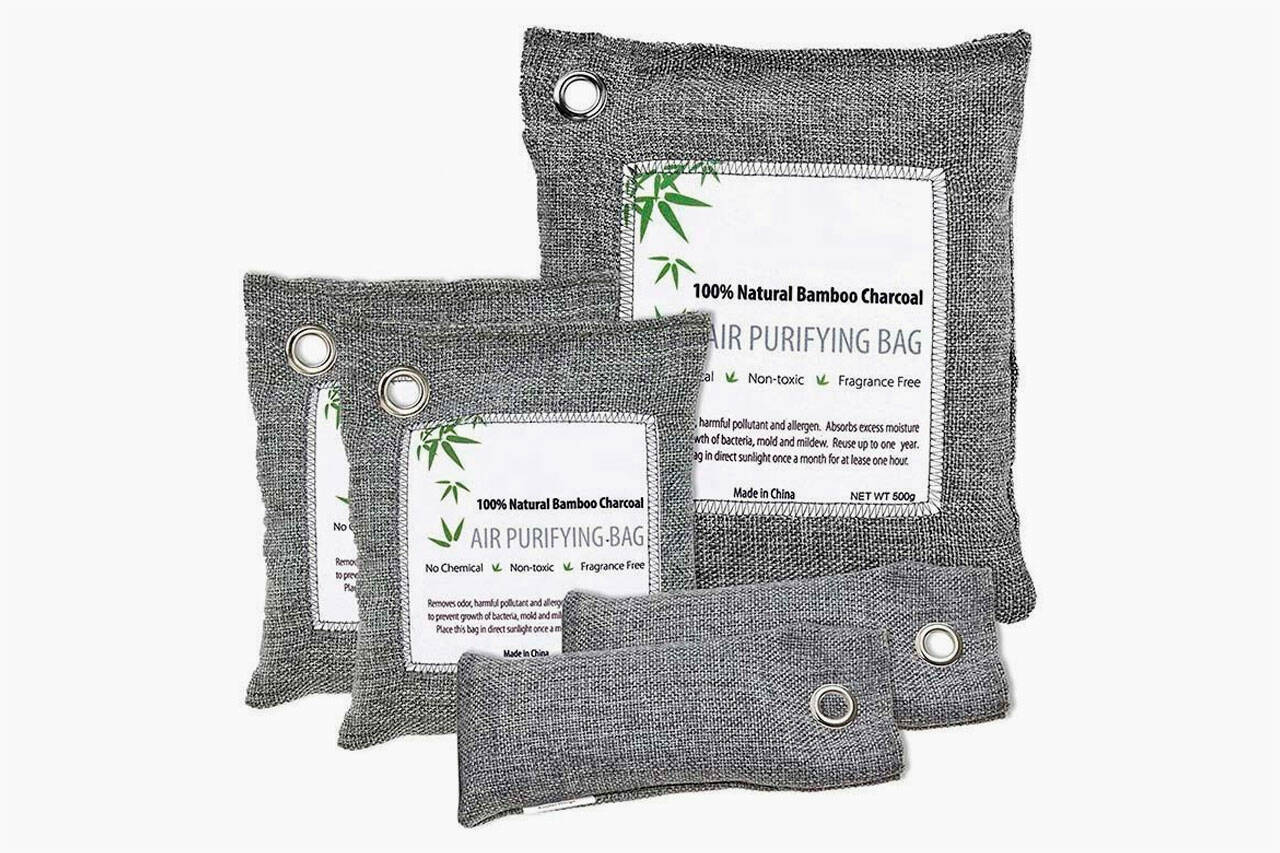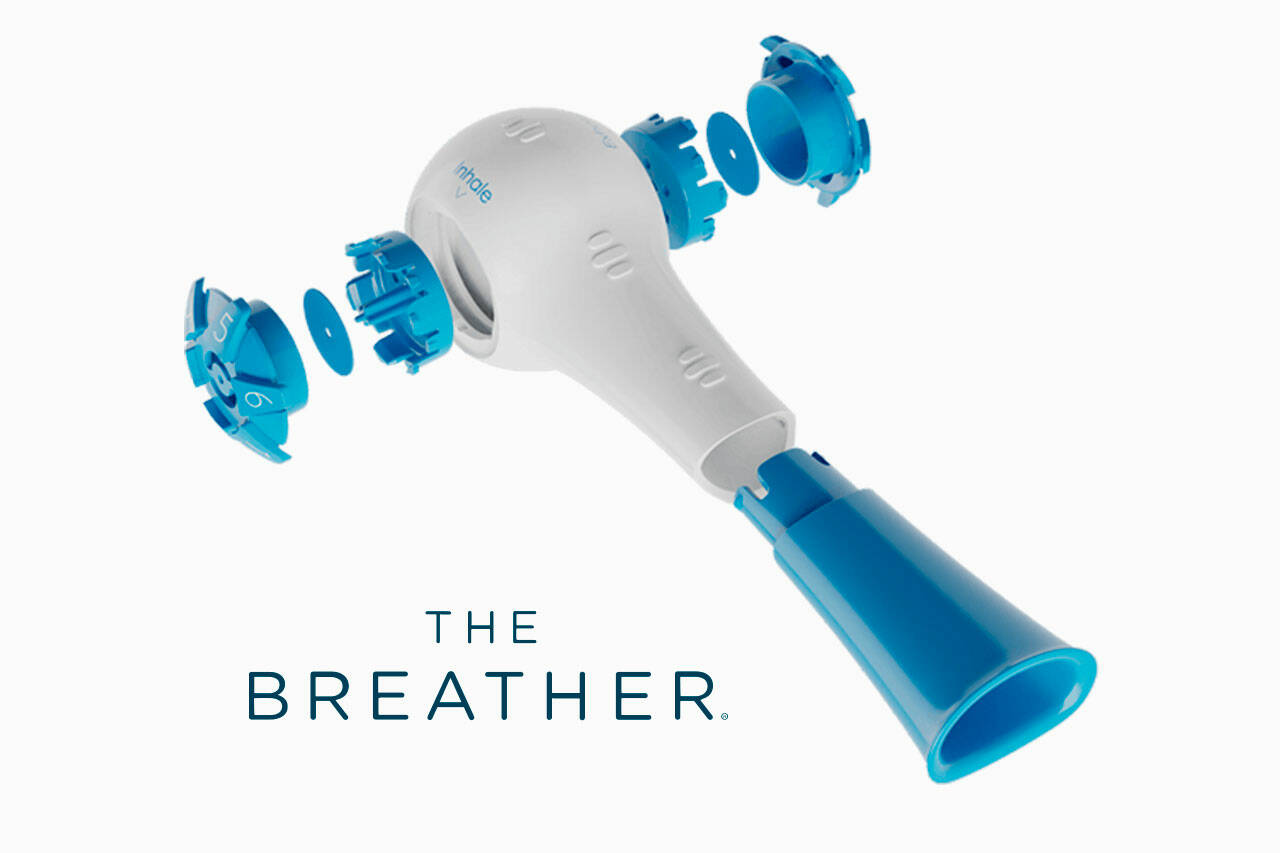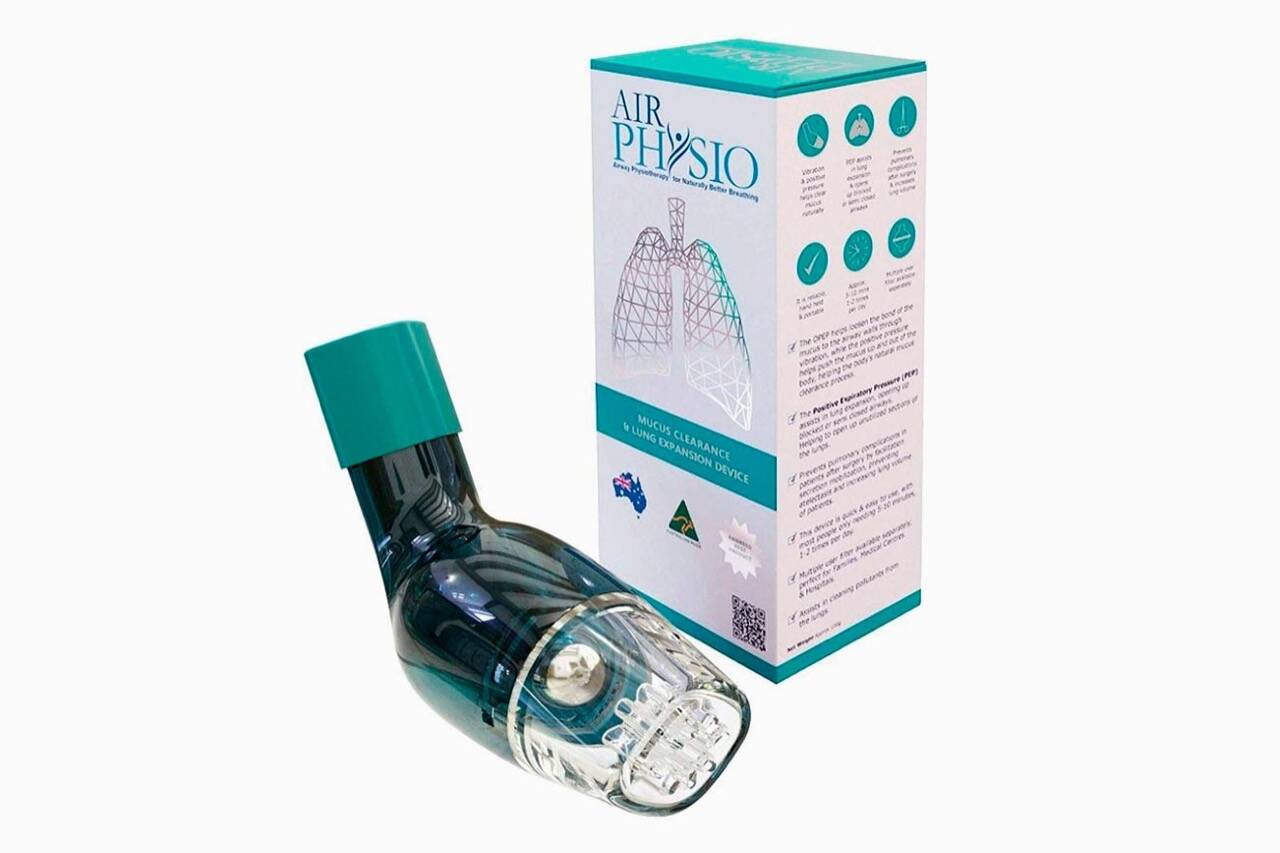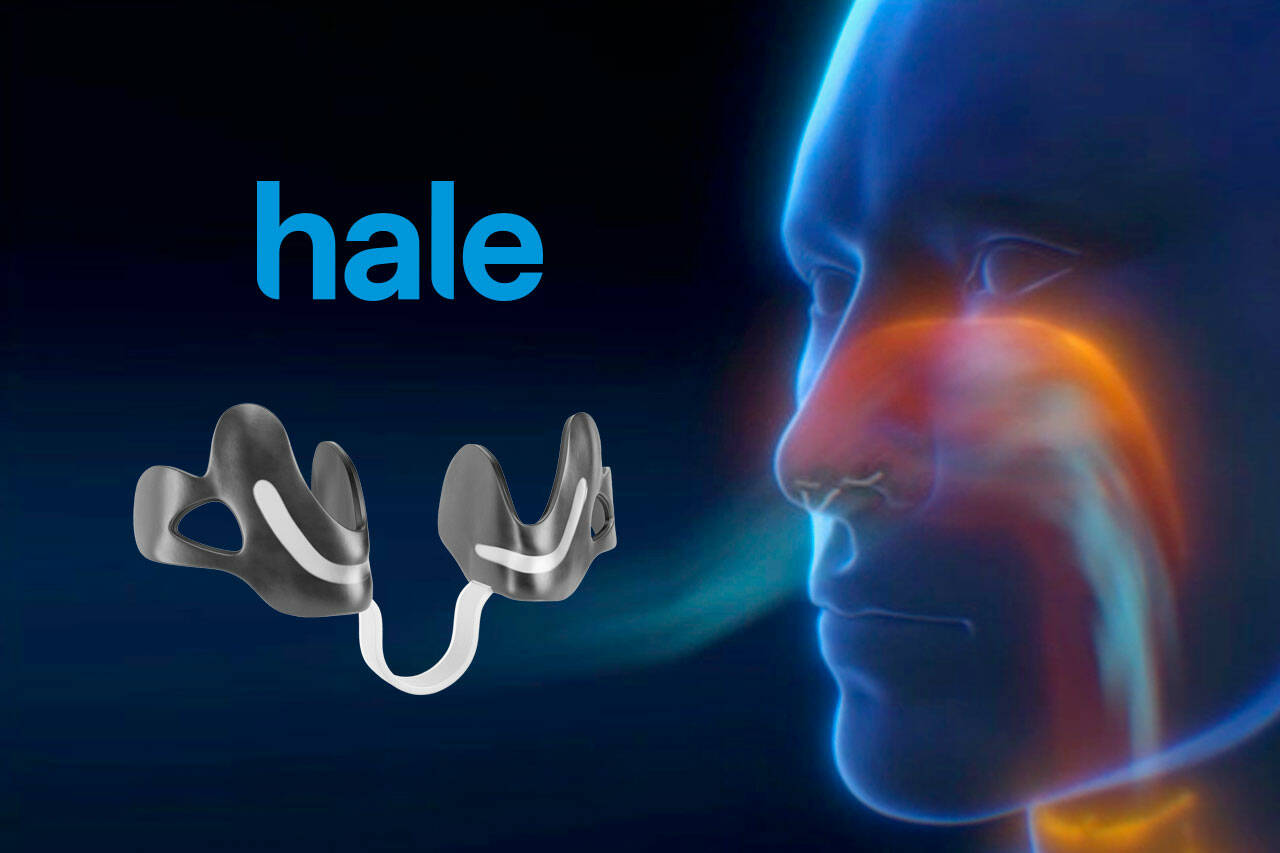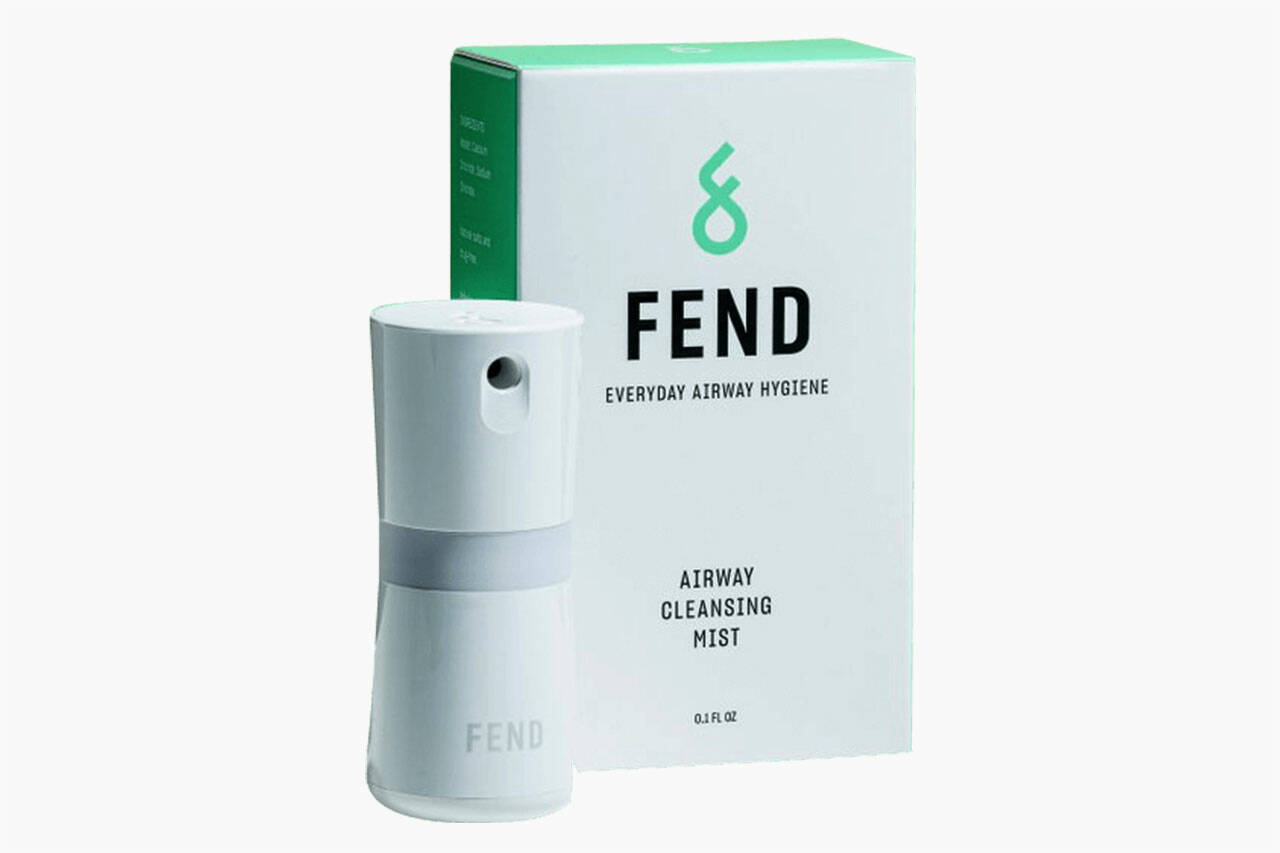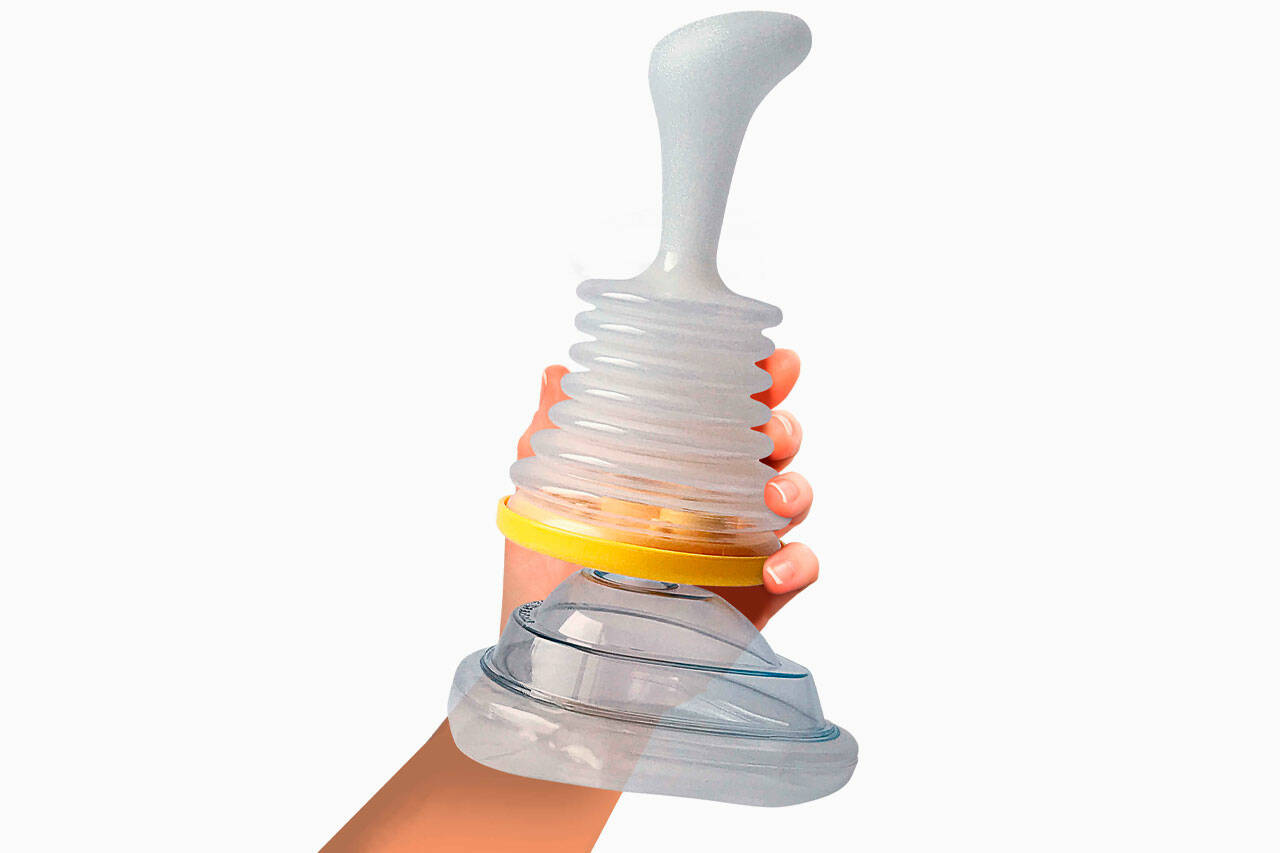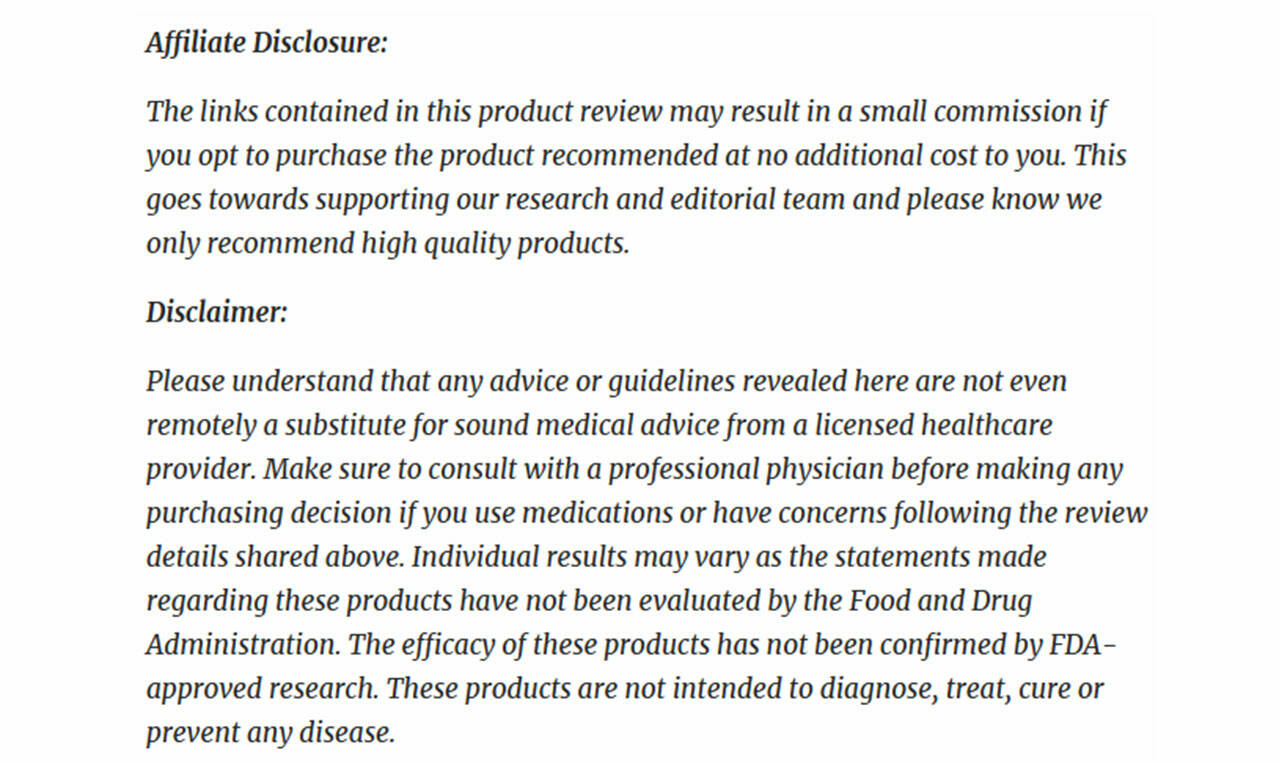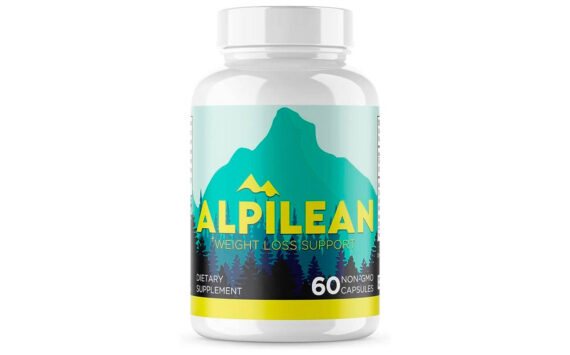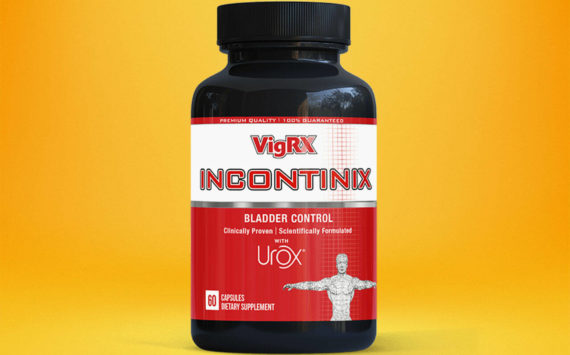Since COVID-19, many people have spent a considerable amount of time indoors, which has been further extended with the concept of remote working. But did you know that Americans, on average, spend 90% of their time indoors? That’s not so bad compared to the fact that they are often exposed to 2 to 5 times the pollutants typically found outdoors. Building materials, lacking ventilation, personal care products, and cleaning products, among others, trigger these levels.
There must be a way to rectify this without having to spend less time at home, right? As our editorial team weighed in on available options, we were persuaded by air purifiers. Air purifiers are designed to sanitize and free indoor air of contaminants. This means the reduced presence of pollutants and risk of unwanted health conditions. Most of all, individuals can breathe freely without worrying about asthma or other related attacks.
After jabbing deeper into this topic, we discovered 19 of the best air purifiers of 2022, most of which have been tested. Some products are the best air purifiers on the market, while others assist with breathing or mask foul odors. Since the latter two components tie in with air purifiers, it naturally made sense for us to introduce products that fall under each classification. Without any further delay, here are our contenders:
The Top Air Purifiers in 2022
Starting with the top air purifiers of 2022, we have:
- PURIFAIR
- Blast Auxiliary Air Cleaner
- Blaux In-Home
- Proton Pure
- DivinAir Dehumidifier
- IonPure
- Air Protect Pro
- Ioner Air Purifier
- CleanAir S
- Air Cleaner
- Safe Air X
- Air Purifier X
PURIFAIR
- Brand: PURIFAIR
- Starting Price: $49.99
PURIFAIR is a portable air purifier that eliminates 99% of dangerous pathogens. This device is celebrated mainly for increased portability and its quiet operations. It is advertised as suitable for everyone (with/without allergies or sensitivities to polluted air). The latter case gives full credit to the integrated low-noise fan. Another feature that stood out to our editorial team is the decision to resort to a permanent filter. Why is this beneficial?
As maintained by the makers, individuals can anticipate long-term uses without worrying about filter replacements, saving an average of $100 yearly. The team has yet to reveal the type of filter used, so we encourage everyone to consult customer support regarding this before placing an order. Aside from that, people concerned by ozone production have nothing to fear, seeing how this unit emits less than .003mg per cubic meter (too low to be dangerous). Other noteworthy features include its minimalistic and modern design, personal air cleansing capacities, and increased safety.
Blast Auxiliary Air Cleaner
- Website: BLAUX
- Starting Price: $69.99
BLAUX is back at it, but with their take on an air purifier/cleaner. Their idea of an air cleaner combines an activated carbon filter, low-noise operations, and a lightweight design. The team justified the reason for the activated charcoal filter, suggesting that it could rid the air of unwanted and harmful contaminants.
Getting back on the topic of operations, the Blast Auxiliary Air Cleaner happens to work with just a press of a button (i.e., no tedious setups). Interestingly, it can also create the desired mood that matches any décor thanks to the added RGB light (red, green, blue, yellow, magenta, fuchsia, and orange). Filters have a lifetime of up to 6 months, during which up to 99.97% of airborne particles are crushed. In our opinion, these features align with Blaux’s values, i.e., “We believe in living an inspired life [and] we make products for people who feel the same way.”
Blaux In-Home
- Website: BLAUX
- Starting Price: $49.99
Another Blaux product that qualified for this guide is the Blaux In-Home. Taking a distinctive approach to enhancing air quality, Blaux In-Home is an air filter, purifier, and ionizer consisting of 12g of raw, activated bamboo charcoal. Individuals are asked to simply place the pouch inside the unit and allow the charcoal to absorb household odors (i.e., pets, cooking, smoking, etc.).
Although the Blaux team decided to deviate from conventional designs, they managed to incorporate critical facets of an air purifier, especially making it comparable to many of our top contenders. This includes silent operations, three fan speeds, interchangeable wall plugs, and ozone-free operations. Could you blame me for being so intrigued? The team devised a unit that also factors its odor, something not all makers ponder.
Proton Pure
- Website: FREEZE2TRIM
- Starting Price: $149.95
Proton Pure is slightly higher in price than some of the discussed air purifiers thus far. This might have to do with the fact that it uses a 3-step air purification system. First, the air is captured through the byzantine mechanical filter, the True HEPA filter, and finally, a carbon filter before blowing air out into the room. The strategy under question seems helpful considering that up to 99.7% of indoor air pollutants (as small as 0.3 microns) might be eliminated. Another feature seldomly offered is a 360-degree air intake, limiting the need to factor in Proton Pure’s position.
Our editorial team liked the makers of Proton Pure attention to detail. Each filter type has provided examples of what pollutant types might be targeted. Take the case of the mechanical filter; it captures hair, lint, fibers, and pet fur, whereas HEPA focuses on dust, pollen, mold spores, and dander. The activated carbon filter targets chlorine, volatile organic compounds, smoke, bacteria, and viruses. Did we mention its low energy consumption, nightlight, quiet, ozone- and cord-free operations, adjustable airflow speeds, or built-in timer?
DivinAir Dehumidifier
- Website: DivinAir
- Starting Price: $69.99
At first glance, DivinAir Dehumidifier might seem like a miniature speaker system, but as the name suggests, it is a dehumidifier. Designed with a PTC heater, this unit is deemed one of the safest, most powerful, and energy-efficient. Given the type of technology considered for DivinAir, it is deemed suitable for regions with increased moisture content. Of course, the latter has its downfalls (i.e., increased warmth during the summer and higher maintenance), but the pros easily outweigh these.
The way by which moisture absorption takes place involves non-consumable silica particles. Precisely, it has been shared that when the originally orange silica beads are saturated, they turn green. This indicates successful absorption and suggests that the beads be dried before deploying the unit. Unlike most dehumidifiers, DivinAir is noise-free, works at 360-degree, and tends to pest- and allergy-related problems. Here are a few words from the makers:
“Must, damp air not only smells bad, but can also cause damage to your belongings and even make you sick. Because of this, we developed DivinAir Dehumidifier to easily take the damp, musty smell out of any room in your house, all without having to run a noisy, power-hungry dehumidifier.”
IonPure
- Website: IonPure
- Starting Price: $55.99
IonPure is a plug-in air purification system to combat bacteria, viruses, mold, dust, allergens, and foul odor (i.e., pet odor, cigarette smoke, etc.). According to the makers, conventional air purifiers use fans to collect dust from the air. The primary issue with this strategy is the costs associated with filter replacements. In some cases, toxic chemicals might be included to cover up odors, promoting temporary relief. Bacteria and other unwanted particles are targeted and weighed down, leaving only pure air behind using negative ionization technology. In other words, there is no need for a filtration system.
In addition to the IonPure mechanism, the makers reflected on its design, which is relatively modern and fits beautifully with any décor. Furthermore, this unit houses a built-in timer and LED indicator (to tell whether it is working), makes very little noise, and is entirely eco-friendly. Together these components are trusted to promote health and wellness.
Air Protect Pro
- Website: Air Protect Pro
- Starting Price: $189
Air Protect Pro is an air purifier that improves the air quality of rooms up to 20 square meters. How? Primarily by filtering out 99.7% of particles and bacteria and assisting in the fight against allergy symptoms. Another device that works with a button press, Air Protect Pro, operates quietly and has an LED display. Above anything else, it has a three-level detector reflecting real-time air quality. The latter is part of why the unit’s cost is pretty hefty. The other part entails the use of not one but three HEPA filters. Are these features justifiable for the given price? This is something everyone should deliberate on before investing.
Ioner Air Purifier
- Website: Ioner Air Purifier
- Starting Price: $79
At this point in the guide, individuals should know how air purifiers and humidifiers generally work. The units examined above are either plug-ins or require specific placement (i.e., on a flat surface). Ioner Air Purifier out beats them all regarding portability because it can be worn around the neck. With a considerably long battery life (up to 48 hours of use), the makers pledge the air everyone breathes will be free of airborne contaminants and particles. Our editorial team was in awe of the Ioner Air Purifier design; however, the absence of transparency makes us wonder whether a $79-sticker price is justifiable.
CleanAir S
- Website: CleanAir S
- Starting Price: $69.99
CleanAir S is a 3-in-1 device that purifies, ionizes, and disinfects captured air. Yet another unit is advertised to kill nearly 100% of viruses (99.9%) while possibly removing harmful gases and odors. As far as operations go, all that’s required is a press of a button. Consequently, delivering low energy consumption, ultra-quiet, and clean air results. Once again, this unit’s increased portability permits users to move it from one room to the next! Taking everything into account, are we thrilled by the lack of transparency? Not quite, and this is something to reflect upon before making purchases.
Air Cleaner
- Website: Air Cleaner
- Starting Price: $54.00
Of all the devices discussed thus far, Air Cleaner is the most visually appealing. Offered in white and three pastel colors (i.e., blue, pink, and yellow), Air Cleaner is a humidifier intended to add moisture to a room of choice. The makers pledge health will always be their top priority and how they plan to tackle anything that comes in the way. In their viewpoint, humidity is one of those hindrances leading to chapped lips, snoring, and itchy eyes. By adding moisture, Air Cleaner may assist in easing flaky skin, chapped lips, and scratchy throats. Other features with the potential to enhance the experience include its LED light (for night vision), compact design (for increased portability), and rechargeable nature.
Safe Air X
- Website: Safe Air X
- Starting Price: $99
Safe Air X is neither an air purifier nor a humidifier. It isn’t even close to an ionizer either. Although having said devices are poised to improve air quality and, consequently, one’s breathing, it is essential to have a sense of how often these devices must be deployed. Safe Air X helps with that because it is a carbon dioxide and ozone meter. In other words, decisions involving ventilation by the environment can be made based on the reading displayed on Safe Air X’s simple-to-read LCD screen.
The best part is that if the level of contaminants exceeds a studied threshold (over 800ppm), this unit will issue an alert. Such alerts come after rigorously tracking temperature, humidity, and particulate matter. In our opinion, such a gadget is fundamental in understanding which device makes the most difference. Why use a humidifier if the problem revolves around dust?
Air Purifier X
- Website: Air Purifier X
- Starting Price: $79
Air Purifier X is a portable fan that strips the air of 99.9% of airborne particles, typically in the form of viruses, bacteria, pathogens, and other harmful particles. The strategy used by the makers is a conventional one not used in any of the other devices in this guide. Specifically, Air Purifier X is said to use ozone to kill most organisms. It is essential to note the higher the ozone; the more problems may become in terms of wellness. Therefore, this is one of those units that should be used for more than 30 minutes daily.
In terms of features, there are several worth raving about. The first and most apparent is that bacteria can be eliminated in under 30 minutes (thanks to ozone). Second, it uses a lithium-polymer battery. Therefore, a single charge guarantees 4 or 5 uses before recharge. Speaking of charging, it should be clear that the unit is fuelled through a USB adapter. Air Purifier X being a handheld device, naturally implies increased convenience and portability. Finally, this compact unit also includes an entirely silent engine that seldomly goes noticed!
The Top Passive Air Purifiers & Deodorizers
So far, an overview of air purifiers, humidifiers, and ionizers has been laid out. Standalone products that track air for contaminants have also been reviewed, as they serve a fundamental role in decision making. This section, though shortened, includes two products we believe assist in removing air of foul odor. Off-putting odors may cause headaches and nausea, and depending on the type of odor, a possible issue might be unraveled. Here’s what we collected:
- AirJoi
- PureAir Max
AirJoi
- Website: AirJoi
- Starting Price: $10.99
AirJoi is an eco-friendly charcoal odor absorber that works to remove all unwanted odors, harmful moisture, mold, and bacteria. Natural micro-porous bamboo charcoal has been selected as the critical component of AirJoi because its structure permits the absorption of compounds (i.e., formaldehyde, benzene, toluene, etc.).
Of course, individuals must be mindful that some compound types are easily absorbed over others, and customer support must request this information. Another benefit of choosing charcoal is its negative ion-rich source of minerals like potassium and calcium. Recall that these are needed to minimize harmful particles and maximize air quality.
Regarding its usefulness, AirJoi is designed as a pouch that can easily be placed in a car, bathroom, bedroom, or gym bag. Since we are dealing with charcoal, AirJoi can last up to 2 years. During this time, individuals must reactivate it monthly by exposing the pouch to direct sunlight. Finally, and most intriguing, is its supposed ability to prevent food spoilage. In this case, individuals are merely asked to place AirJoi in the fridge!
PureAir Max
- Website: PureAir Max
- Starting Price: $49
PureAir Max is nearly identical to AirJoi. The air purifying pouch contains activated bamboo charcoal that can rid the air of foul odor and harmful compounds. The result is supposedly non-toxic and chemical- and perfume-free indoor air. For people wondering why anyone would purchase PureAir Max over AirJoi, especially considering the significant differences in pricing, it boils down to availability. AirJoi has been around slightly longer than PureAir Max and has since amassed great interest. Should supply be lagging, individuals at least have the option to resort to PureAir Max.
The Top Lung & Breathing Assistance Devices
Finally, we reached the last stretch of products. In addition to air cleaners, humidifiers, ionizers, and deodorizers, our editorial team felt it was reasonable to include breathing improvement devices. Poor air quality might make it difficult for the lungs to cooperate, and this is something that must be rectified promptly. Here are our top 5 contenders for this subcategory:
- The Breather
- AirPhysio
- Hale Breathing
- FEND Nasal Mist
- LifeVac
The Breather
- Website: PN Medical
- Starting Price: $49.99
The Breather is an evidence-based inspiratory/expiratory respiratory muscle training (RMT) device that stimulates diaphragmatic (or belly) breathing. Invented in the 1980s by a respiratory therapist, Peggy Nicholson, this device achieves two things. First, it strengthens respiratory muscles, and second, it helps clear the airways. The former encourages breathing, while the latter makes coughs stronger and more productive so that excess phlegm and mucus buildup are eradicated.
Featuring an FDA-registered and medical-grade design, The Breather has been scientifically designed by doctors, and scientists, making it a staple for patients with asthma, atelectasis, neuromuscular disease, COPD, CHF, and Dysphagia, among others. Above everything, The Breather can be deployed by adults (for healthy aging) and children aged eight and over. When used consistently (requiring only 5 to 10 minutes daily), improvements may be noticed within the first 2 to 4 weeks.
AirPhysio (Device for Average Lung Capacity)
- Website: AirPhysio
- Starting Price: $59.99
The AirPhysio Average Lung Capacity is an Oscillating Positive Expiratory Pressure (OPEP) intended to improve breathing. As individuals exhale through this device, gentle pulses of positive pressure are created on the lungs and airways, expanding them further. Excess mucus and other hindrances are loosened and eventually cleared with productive coughing. By the end, individuals should find themselves breathing better again.
AirPhysio comes in different sizes, and in that respect, the Average Lung Capacity has been designed for most teenagers and adults (who don’t have severe lung conditions). Trusted and recommended by hundreds of pulmonologists, this device might help alleviate symptoms from a wide range of lung conditions such as asthma, atelectasis, bronchiectasis, cystic fibrosis, COPD, chronic bronchitis, and common flu and cold symptoms.
Hale Breathing
- Website: Hale Breathing
- Starting Price: $78.99
Hale is a breathing aid inspired by Dr. Byrne’s experience at the clinic and operating room while treating nasal obstruction for over 20 years. This clinically tested aid could potentially liberate individuals of nasal valve collapse, deviated septum, airway obstruction, and nasal inflammation. How? Harmful bacteria and particles are filtered out by expanding the nasal passage using Hale. How else could this occur, given that the human lips and teeth have generally been developed to remain shut?
Dr. Byrne strongly supports nasal breathing because it creates a pleasant temperature for the lungs. The heart and blood vessels will receive the sought-after oxygen and nitric oxide for optimal performance. Hale is deemed an embodiment of ergonomic materials (i.e., rubber and plastic polymers), undetectability (i.e., easy to hide as it rests in the nostrils), easy use and maintenance (i.e., inserting and removing is effortless), personalized fit, and a 100% drug-free solution.
FEND Nasal Mist
- Website: FEND
- Starting Price: $29.99
Based in Germany, FEND is a hygiene system intended to hydrate our airways. This is important because extreme dry airways are the leading causes of sneezing, nose-blowing, and coughing. Worst, it may prevent the airways from cleaning and filtering out contaminants. With FEND, individuals are getting a mist-releasing device that hydrates and cleanses broader areas of the upper respiratory tract (i.e., the mucus surface lining of nasal passages, the trachea, and the main bronchi). The latter makes FEND superior to traditional nasal saline sprays and neti pots.
To think that FEND only combines a unique blend of saltwater and calcium to produce desired results is quite impressive. As per the team, the duo above is fundamental for keeping airways clean while creating a natural defense against dirty air (i.e., filtering up to 99% of allergens, carcinogens, and pathogens). FEND remains a popular choice because it is clinically proven and doctor-recommended, includes all-natural ingredients, promotes all-day effectiveness (each mist provides up to 6 hours of relief), and is compact and portable.
Here’s what the inventor and founder, Dr. David Edwards has to say about FEND:
“We can breathe better than we do. Helping our upper airway immune system function as well as when we lived in humid salty air and designing a new behavior has been a 20-year adventure in the sciences and the arts. I now believe global access to cleaner air is achievable within our generation.”
LifeVac
- Website: LifeVac
- Starting Price: $71.99
LifeVac is a choking rescue device meant to save lives. It all started with a woman in a hospital who was weeping following the death of her young son. The cause was a grape lodged into his windpipe, making the standard Heimlich Maneuver useless. Hearing this story, the founder and CEO, Arthur Lih, set out to invest in an apparatus that could clear an airway.
Joining forces with Dr. Brody and other close friends, LifeVac came to life. This comes after establishing a research and development facility where upper airway clearing devices were produced to bring the safest, most straightforward method to saving a life. The LifeVac Hall of Saves represents lives that have been saved using the choking rescue device, totaling 388. To the team,
“388 is more than a number […] Each number means that a family did not have to suffer a great loss.”
Taking everything into account, LifeVac is designed with a patented valve that prevents air from exiting through the mask and ensures that food or objects are not pushed downwards. This device creates a one-way suction (over 300mmhg in power) to remove lodged items. Our editorial team was not only convinced by the mechanism but also by many of its features.
LifeVac is FDA- and MHRA-registered, has been clinically studied and confirmed by third-party testing for effectiveness, and requires no prescription. It also includes a transparent design to see the obstruction, an interchangeable mask (comes in child and adult sizes), and a one-way valve.
The Ranking Process: How Our Top 19 Survived the Elimination Process
From the summaries above, individuals are likely to have mustered that there are several angles of attack regarding indoor air quality. The current market houses devices that directly target contaminants, odors, and the absence of excess moisture. For people suffering from poor air quality, breathing becomes difficult; hence, additional support can be garnered from various breathing-assisting apparatuses.
With thousands of options, our editorial team had to narrow the list down. This would have been infeasible if it weren’t for our customizable ranking system. We sat down to see which features were most important in evaluating and ensuring that the devices qualified. From this perspective, seeking the following facets by product category was sensical:
Air Purifiers, Humidifiers, Ionizers
Type of Filtration
The type of filtration used in an air purifier, humidifier, and ionizer must be clearly outlined on the official website. Having this knowledge allows users to understand the overall mechanism. Our editorial team was interested in ozone, negative ion, carbon, and ultraviolet light filtration systems. The absence of said knowledge puts products at the very bottom of the list!
Purification Effectiveness
The outcome typically indicates the effectiveness of a purification or humidification system. However, our editorial team needed explicit information on the types of compounds being targeted by each device. Some examples include germs, particulate matter, smog, allergens, pollen, dander, and pet fur. If the makers have not listed these components but provide an outline of the filters used, individuals can reverse engineer the information to understand a unit’s function.
Area Coverage
Air purifying devices support varying areas (i.e., anywhere from 20 to over 1000 square feet). For this guide, we needed to have said knowledge for two reasons. First, we intend to offer a budget-friendly product offering. The limitation of this is area coverage. The smaller the device, the less area it is likely to cover. Therefore, our second intention is to focus on air purifying for personal space. Of course, it was also included if we came across a unit that covers larger areas and aligns with the budget requirement.
Battery Life & Uses
Another variability factor to account for is battery life. Some units may perform over extended periods, while others require repeated charging. Regardless, our selection only includes portable air purifiers, humidifiers, and ionizers. Charging should be swift if the appropriate USB charging wires and ports are available. We preferred units with long-use capacities on each charge, but no products were eliminated because of the latter’s absence. As for uses, the makers must facilitate a positive experience, and this could be by providing the required charging, ensuring charge time is quick and installation time is minimized (i.e., the unit comes ready to use).
Maintenance Requirements
Maintenance is fundamental for proper function and extended uses. Our editorial team refrained from selecting air purifiers and the like designed for short-term operations and accounted for filter replacements (i.e., every 3 to 6 months). A unit was moved up on the list if filter replacements were rare, but this depends solely on how they have been engineered to work. If durability falls short, said units were excluded from this guide.
Complementary Features
Complementary features are subject to vast interpretation. We could have an air purifier that meets most of the requirements above but lacks complementary features. If we have reason to believe that a unit is powerful without a list of added features, we proceed with them anyways. Speaking of listed features, we were most drawn to noise-free operations, LED lights for night vision, fan speeds, carrying handles, aesthetics (modern versus traditional), and color options. For people who want to further shrink the list from 19 to single digits, we recommend adding features essential on a case-by-case basis.
Air Deodorizers
The second classification of products entails air deodorizers, which were selected based on sustainability and fragrance sensitivities.
Sustainability
For a long time, temporary air deodorizers in the form of air fresheners have been chosen to clear the air of foul odor. The growing issue with said fresheners is the addition of VOCs and other pollutants to the air along with secondary reaction products. Though the scent might be pleasing, no rectification takes place. If anything, the air quality deteriorates this way. Instead, our editorial team resorted to charcoal. When charcoal is activated, it binds to toxins and rids the air of unwanted substances. It has a highly porous surface area, catching and trapping scents like an ordinary vacuum. AirJoi and PureAir Max can also be used for extended periods, making them the most sustainable solutions.
Fragrance Sensitivities
Charcoals do not exert any scents while absorbing odor, yet another reason for their selection. Sure, air fresheners are also offered in natural fragrances, but at the end of the day, they have a higher chance of negatively impacting health than charcoal. Besides being fragrance-free, charcoal is 100% natural, non-toxic, and has been demonstrated as a highly effective method.
Breathing-Assisting Devices
Clinical Evidence & Doctor Recommended
For breathing-assisting devices that directly involve the human body (inhaling/exhaling), it was imperative for the design to either be patented or be backed by clinical evidence. We simply couldn’t go with a product that hasn’t been tested, registered, or recommended by pulmonologists and other respiratory-focused experts. Our intention for the subsection was to support those with respiratory and lung conditions, as poor air quality negatively influences this particular group. Hence, any device lacking substantial evidence was voided; only those that guarantee safe uses and effectiveness were included.
Regardless of the product, manufacturer transparency is a must. Companies that fail to provide a background on their products’ existence are discomforting. Searching for our top picks also found solutions lacking sound contact information. These are real-life examples of scams hidden amidst influential players in the game. Individuals should draw a line if a supposed brand neglects to explain the driving forces/mechanism of a device.
Another sought-after feature that applies to all air-purifying and breathing devices is a money-back guarantee. This permits individuals (especially those who purchase in bulk) to give a product a try and to return the unused ones if it doesn’t align with their needs. But, since the spread of COVID-19, companies have rejected used items, but a small handful usually accepts them. This is because they are highly confident that issues will not arise.
Finally, all products underwent a thorough analysis based on verified customer reviews and ratings. Such commentary is essential to identify the pros and cons of a product while understanding real-world applications. Going solely based on a company’s advertisement is rarely sufficient unless studies and reviews are posted.
Ultimately, many of the listed features can be used interchangeably across the different product categories. We decided to group them to emphasize how critical select attributes are for specific product types. Once again, this ranking system is entirely customizable, allowing individuals to add or remove those above.
What is an Air Purifier?
Air purifiers are designed to eliminate odors, allergens, dust, and other airborne particles. The majority have two major components. The first is a fan tasked with circulating, pulling in air, and releasing it back out. Before release, airborne particles travel through a single (or multiple) filter(s) to eradicate them. Not all air purifiers are designed similarly, so it is imperative to address the types of particles under question and the types of filters.
3 Types of Airborne Particles
One source reviewed the different airborne particles that might impact indoor air quality. These include:
Particulate Matter (PM)
Particulate matter (PM) is a “mix of solid particles and liquid droplets suspended in the air.” It ranges from dust to tiny particles that can’t be seen with the naked eye. Due to their minute sizes, individuals unknowingly inhale them with each breath. Rarely do we know of PM exposure unless a health condition or related symptoms are developed as a result. So, how small is “minute”?
The source suggests that some PM might be 10 micrometers in diameter while others may be less than 2.5 micrometers. The latter is a health risk that could damage the lungs and internal organs (by traveling through the bloodstream). Health risks include nonlethal heart attacks, irregular heartbeat, asthma, and decreased lung function (or increased respiratory symptoms).
Volatile Organic Compounds (VOCs)
The next group of compounds linked to poor indoor air quality is volatile organic compounds (VOCs). These are often by-products of industrial manufacturing and are commonly found in household, cleaning, and disinfecting products (not to forget paints, sprays, and solvents). Remember that not all substances under VOCs harm health, but individuals with high sensitivity may notice allergic reactions. Symptoms of continued and long-term exposure include skin reactions, itchiness of the skin, nose, and throat, nausea, and headaches.
The source referenced the Environmental Protection Agency’s (EPA) list of VOCs that people should avoid at all costs. These include benzene (i.e., cigarette smoke, vehicle exhaust, and paint supplies), methylene chloride (i.e., a carcinogen), and perchloroethylene (i.e., dry cleaning carcinogenic chemical).
Bioaerosols
Bioaerosols (i.e., particles released from living beings) belong to a particular PM group because of their distinctive characteristics. Many of the air purifiers in this guide aim to eliminate the following types:
Mold
Mold is found practically everywhere, a fungus that spreads by releasing airborne spores. Most are easily detected, but certain types might still be too small for the naked eye. People with allergies or asthma need to be extra careful as even an inch of exposure could lead to coughing, a runny or stuffy nose, sore throat, and eye and skin irritations.
Bacteria
Whether indoor or outdoor air, it is likely to contain some trace of bacteria. Fortunately, most are deemed harmless and essential for survival; however, some may pose health risks like strep and staph.
Viruses
The following common airborne pollutants are viruses. Like the flu, viruses also “spread through liquid respiratory droplets that do not stay in the air for long,” expounds the source, noting that certain types have been linked to increased transmission.
Allergens
Finally, we have allergens, or “substance[s] that trigger an immune system reaction.” Again, these aren’t all dangerous but pose a challenge in the form of a reaction. Common household allergens include pollen, pet dander, and dust mites.
5 Types of Air Purifying Filters
These groups are removed depending on the air purifying filters, whether gaseous pollutants or particulate matter. The five common types include:
Negative Ion Filters
Air ions are invisible atoms containing an electrical charge that float in the atmosphere. As the name hints, ion filters emit negative ions into the air, attaching to tiny airborne particles. When these particles interact with negative ions, a shock of electrical charge is introduced to clump the two types together.
Once clumped, the unwanted particles land on surfaces of objects in a room (i.e., walls, tabletops, curtains, etc.). All that’s required is to clean those surfaces. Bear in mind that electrical charges emit ozone into the air. However, the amount produced is so little to have a negative effect. Finally, negative ion filters are known to potentially prevent virus growth. The advantages and disadvantages have been listed below:
Advantages
- May eliminate viruses, bacteria, and mold
- May lower stress by alleviating mood
- May regulate sleep patterns
- May boost the immune system
Disadvantages
- It might not remove large particles from the air (including asthma and allergens)
- Ineffective against dust, pet dander, and pollens
- Ozone is released, leading to shortness of breath, difficulty breathing, lung inflammation, and the risk of respiratory infection to inactivate viruses.
Ultraviolet Light Filters
Ultraviolet (UV) light has been used as a disinfectant for several things, such as water and surfaces. This respective filter type works by using UV, which has a specific wavelength to neutralize bacteria. As a result, it may inactivate harmful pollutants such as mold, bacteria, and viruses. As for the advantages and disadvantages, we have:
Advantages
- Quiet operations
- Requires light, which eliminates the need for filters (and filter replacements)
- May remove microscopic particles (i.e., viruses and bacteria).
Disadvantages
- With high maintenance, UV light typically loses power by 15% annually, resulting in ineffective results over time.
- It might not remove large particles from the air (including asthma and allergens)
- Ineffective against dust, pet dander, and pollens
Ozone Filters
Ozone filters emit a large concentration of ozone into the air. The released ozone interacts with pollutants to remove chemicals, mold, viruses, and bacteria. This type of cleaner is generally used in commercial settings. It is important to note that other filters mentioned in this guide also produce ozone at a much lower scale. Due to the large-scale ozone emission, people are asked to refrain from staying in the room during its operations. As for the advantages and disadvantages, we have:
Advantages
- Extremely effective at killing mold, mildew, bacteria, germs, viruses, and odors
- Includes built-in timers to ensure that people do not enter a room during its operations
Disadvantages
- Emission of ozone, which could pose health implications with higher concentrations
HEPA Filters
High-Efficiency Particulate Air (HEPA) filter is a mechanical filter designed to remove up to 99.7% of airborne pollutants (i.e., dust and mold of 0.3 microns). These particles are usually so small that the human eye cannot identify them, so that one might resort to HEPA. Most air purifiers with multiple filters ensure to include HEPA as one of them. That said, here’s a brief on the advantages and disadvantages:
Advantages
- Best against the smallest of compounds (i.e., ultrafine particles, odor, and allergens)
- Have long shelf lives that require filter replacements once every 2 to 3 years
Disadvantages
- Possibility of mold and bacteria growth
Activated Carbon Filters
Everyday household products typically release VOCs in the air. Carbon filters are built to filter gasses by releasing activated carbon. Once released, they combat different VOC types as listed earlier in this guide. Research suggests that this filter type has the potential to trap gas molecules only when carbon is activated. Why is the activation key here? Carbon activation implies releasing a natural charge that attracts and traps said compounds. In terms of its usefulness and drawbacks, we have:
Advantages
- It is an inexpensive filtration technology
- May remove odor and VOCs
- May improve indoor air quality
Disadvantages
- Incapable of trapping and clearing specific allergens, viruses, bacteria, and pet dander of ultra-fine size
Frequently Asked Questions About Air Purifiers
Q: What is indoor air quality?
A: Indoor air quality (IAQ) refers to the air quality in and surrounding buildings and structures. It is important to consistently measure air quality to identify possible means of rectification and maintain overall health.
Q: What contributes to poor indoor air quality?
A: According to the United States EPA, indoor and outdoor sources are at the top of the list, but of course, there are others to consider as well. Below is a quick summary of each source type:
- Tobacco or cooking supplies, among others, release carbon monoxide
- Cleaning supplies, pain, and other household products release an array of chemicals
- Degrading or new materials may also release chemicals
Outdoor Sources:
- Radon and other chemicals that seep into buildings through cracks
- Toxic chimney smoke re-entering buildings and houses
- Unstable chemicals derived from water supplies
Other Sources:
- The air exchange rate depicts infiltration and natural and mechanical ventilation.
- Weather climate (some conditions might lead to higher humidity)
- The number of occupants per building
- Opening windows for fresh air
Q: Why is maintaining indoor air quality essential?
A: When indoor air quality is not up to par, it may give rise to various health complications and general concerns. Some examples include eye and respiratory irritations, with more severe consequences ranging from lack of motivation and loss of productivity to carbon monoxide poisoning. As people spend most of their time indoors, air quality is fundamental for increased breathability and quality of life.
Q: What is an air purifier?
A: An air purifier is a device that aims to eliminate impurities from the air. In so doing, individuals can anticipate a reduction in the risk of being exposed to pollutants.
Q: How much space will air purifiers cover?
A: Air purifiers come in varying sizes to fit any desired location. A typical air purifier used for single rooms can handle areas of up to 700 square feet. Medium-sized cleaners will consequently cover more space, and commercial grade or whole-house models are designed to protect multiple rooms concurrently.
Q: Are air purifiers loud?
A: Loudness is one of the characteristics of a device that is subjective, seeing as everyone’s noise tolerance is different. The loudness of an air purifier relies on several factors, including but not limited to the model and fan speed. Initially, the loudness might be apparent, but with time, stable fan speeds, and consistent elimination of airborne particles, these devices are trusted to quiet down eventually.
Q: How long should an air purifier be running?
A: Air purifiers are most effective when used continuously throughout the day. This can be a costly and energy-intensive endeavor. Most air purifiers come with various cleaning speeds to combat that. For example, when the room is empty, the air purifier can run slower than when there are people. This not only maintains air quality but also minimizes energy and electricity costs. It should be evident by the size of our top contenders that energy uses are already lower than conventional units.
Q: Should I close the door when using an air purifier?
A: As mentioned earlier, air purifiers aim to clean the immediately contained air. Therefore, opening or closing doors do not severely impact its efficiency. Any new pollutants that enter the designated space will be promptly removed.
Q: Do all air purifiers sanitize for the identical airborne particles?
A: There are several purification/filtering technologies deployed within air purifiers. These technologies aim to remove airborne pollutants (i.e., dust, smoke, pollen, pet dander, mold, bacteria, etc.) or gaseous compounds. However, the contaminants a purifier can clean are not the same across the board. For example, one filter might be best for general air quality cleaning, while another is superior in a commercial setting. Refer to the above section on the five most common filter types.
Q: What steps are required for maintaining air purifiers?
A: The maintenance process for air purifiers is as simple as cleaning out the filters. Most cleaners have 2 to 4 filters which should be cleaned out occasionally and replaced every 6 to 8 months for optimal results. Fortunately, some models have permanent filters and need a cleanse or replacement.
Q: Do air purifiers produce ozone?
A: The emission of ozone is entirely dependent on the filter type. If an air purifier uses only high-efficiency particulate filters, there will be no ozone production. However, ionizing air purifiers do produce ozone because of their electric charge.
Q: Why is the CADR important when looking for an air purifier?
A: The clean air delivery rate (CADR) represents the volume of filtered air delivered by an air purifier. It comes in 3 measurements, one for dust, one for pollen, and one for tobacco smoke. The higher the measurement, the faster the filtration processes.
Q: Can an air purifier help prevent the spread of COVID-19?
A: When an air purifier is used correctly, it may reduce the presence of airborne contaminants, including viruses, in confined spaces. However, it is essential to note that using air purifiers alone does not suffice to protect oneself from COVID-19. It is recommended alongside CDC-regulated best practices.
Q: What can I actively improve indoor air quality besides using an air purifier?
A: Several protective measures can be deployed simultaneously to improve indoor air quality. Of particular interest are:
Controlling the source:
The most effective way to improve air quality is to nip poor indoor air at the source. An example of this is resorting to a gas stove, as it can be manually adjusted to decrease the number of emissions.
Improved ventilation:
Indoor air quality becomes a problem when the same contaminated air is confined in a room. A great way to quickly improve quality is by opening windows and doors. In other words, increasing the amount of outdoor air may lower concentrations of pollutants indoors. Mechanical ventilation may also be used (i.e., HVAC systems) to bring in outdoor air. Of course, this practice must be cautiously considered, considering how outdoor air is likely polluted.
Q: What is the best location for an air purifier?
A: A standard air purifier is designed to clean personal spaces. Putting the cleaner in a room that people spend most of their time in, such as a bedroom, is ideal. Considering that areas such as living rooms are also occupied, consider purchasing multiple units.
Q: What is the difference between ACH and CFM?
A: ACH refers to Air charges per hour, indicating the frequency that the air purifier filters or changes air per hour. An ACH of 5 to 6 is recommended. The atmosphere should be filtered 5 to 6 times within a given hour.
On the other hand, CFM refers to cubic feet per minute, indicating the number of cubic feet of air that moves through the unit every minute. CFM is influenced by the number of furniture, fan speeds, and insulation. The ideal value for this measurement depends on the volume of the room in question divided by the unit’s ACH. The higher the CFM, the higher the potential air purification results.
Q: Are there any risks to using air purifiers?
A: There is a possibility of harm. As mentioned earlier, ozone-emitting filters in air purifiers can lead to respiratory infections. When choosing an air purifier, it is essential to understand what kind of filters it comprises to keep risks at bay.
Q: Why choose activated carbon filters over ozone filters?
A: Carbon filters use activated carbon to remove odors and chemicals from indoor air, whereas ozone filters emit ozone into the air to fight pollutants. There are health implications when using the ozone option, as ozone is hazardous to airways. On top of that, ozone filters can only remove a small subset of pollutants from the air.
Q: Which filter should a person with asthma look for in an air purifier?
A: HEPA air filters are typically deemed the best for those with asthma. They generally target microscopic particles and are believed to remove about 99.7% of allergens. With that said, it is always best to consult a healthcare practitioner on whether such a device may be helpful for people with medical conditions.
Q: Which air purifiers help with pet dander and odor?
A: HEPA filters may remove microscopic pollutants. For this reason, air purifiers with this filter are recommended to help remove pet dander. In terms of eliminating odor, carbon filters are said to be superior.
Q: How often should air purifier filters be replaced?
A: Every air purifier model is different, and thus the frequency of cleaning and replacing filters will vary. On average, changing filters every 6 to 8 months is recommended for optimal results.
Q: Does respiratory muscle training (RMT) work?
A: According to a review on RMT, it is an effective solution for not only breathing and improving the function of respiratory muscles but also for enhancing sports and exercise performance. Its ergogenic effects prove it to be a must-have for ventilatory demands, exercise modality, and other training-related matters.
Q: What is the difference between Oscillating Positive Expiratory Pressure (OPEP) and Respiratory Muscle Training (RMT)?
A: OPEP is used to clear respiratory secretions, especially for people struggling with chronic diseases and the inability to cough and sneeze. On the other hand, we have RMT, which also achieves airway clearance, primarily by strengthening respiratory muscles. The latter has far more applications than the former (i.e., effective in treating headaches/migraines, tendonitis, arthritis, and other joint dysfunction).
Q: Why choose activated charcoal as an air deodorizer?
A: Reasons in favor of activated charcoal include:
- It is produced at higher temperatures, which is the reason for its desired surface area
- It is 100% natural and is activated in the presence of sunlight
- It has a highly porous surface (i.e., the higher the porosity, the more odor-causing molecules trapped)
- Absorbs odors and moisture instead of temporarily masking them
Q: Which air purifiers are considered elite?
A: To gauge which air purifier is the best depending on needs, please refer to the detailed overview of our top contenders.
Q: How do I decide on the best breathing-assisting devices?
A: Our research suggests that there are five breathing-assisting devices worth considering. These have been supported by scientists, medical experts, and clinical research. We encourage everyone to review the benefits of using The Breather, AirPhysio, Hale Breathing, FEND Nasal Mist, or LifeVac. Depending on each person’s health, the results can be life-transforming.
The Top Air Purifying Devices in 2022 Final Verdict
Ultimately, the air purifier market is saturated with innovative ideas for improving air quality. After extensive research, our editorial team felt most comfortable with the top air purifying devices in this guide. Some are undeniably superior to others regarding transparency, features, customer reviews, and effectiveness. Compared to the section on air purifiers, the breathing-assisting devices have a stronger foundation and support from medical and scientific experts. This is not to say that the air purifiers are ineffective, but that some makers aren’t as transparent as we would have liked. Fortunately, they made up for it through verified customer reviews and complementary features.
We hope this guide succeeded in pinpointing the elite and provided insight into the overall process of identifying good versus flawed products. Until the next update, we encourage everyone to do their due diligence before proceeding!
